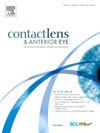Evaluation of large language models for providing educational information in orthokeratology care
IF 3.7
3区 医学
Q1 OPHTHALMOLOGY
引用次数: 0
Abstract
Background
Large language models (LLMs) are gaining popularity in solving ophthalmic problems. However, their efficacy in patient education regarding orthokeratology, one of the main myopia control strategies, has yet to be determined.
Methods
This cross-sectional study established a question bank consisting of 24 orthokeratology-related questions used as queries for GTP-4, Qwen-72B, and Yi-34B to prompt responses in Chinese. Objective evaluations were conducted using an online platform. Subjective evaluations including correctness, relevance, readability, applicability, safety, clarity, helpfulness, and satisfaction were performed by experienced ophthalmologists and parents of myopic children using a 5-point Likert scale. The overall standardized scores were also calculated.
Results
The word count of the responses from Qwen-72B (199.42 ± 76.82) was the lowest (P < 0.001), with no significant differences in recommended age among the LLMs. GPT-4 (3.79 ± 1.03) scored lower in readability than Yi-34B (4.65 ± 0.51) and Qwen-72B (4.65 ± 0.61) (P < 0.001). No significant differences in safety, relevance, correctness, and applicability were observed across the three LLMs. Parental evaluations rated all LLMs an average score exceeding 4.7 points, with GPT-4 outperforming the others in helpfulness (P = 0.004) and satisfaction (P = 0.016). Qwen-72B’s overall standardized scores surpassed those of the other two LLMs (P = 0.048).
Conclusions
GPT-4 and the Chinese LLM Qwen-72B produced accurate and beneficial responses to inquiries on orthokeratology. Further enhancement to bolster precision is essential, particularly within diverse linguistic contexts.
大型语言模型在角膜塑形术护理中提供教育信息的评估。
背景:大型语言模型(LLMs)在解决眼科问题方面越来越受欢迎。然而,它们在角膜塑形术(近视控制的主要策略之一)患者教育方面的效果尚未确定。方法:本横断面研究建立了一个由24个角膜塑形术相关问题组成的题库,作为对GTP-4、Qwen-72B和Yi-34B的查询,以提示中文回复。使用在线平台进行客观评价。由经验丰富的眼科医生和近视儿童家长采用5分李克特量表进行主观评价,包括正确性、相关性、可读性、适用性、安全性、清晰度、有用性和满意度。还计算了总体标准化分数。结果:qwen72b的字数统计最低(199.42±76.82)(P)。结论:GPT-4和中文LLM qwen72b对角膜塑形术的回答准确、有益。进一步提高准确性是必要的,特别是在不同的语言环境中。
本文章由计算机程序翻译,如有差异,请以英文原文为准。
求助全文
约1分钟内获得全文
求助全文
来源期刊

Contact Lens & Anterior Eye
OPHTHALMOLOGY-
CiteScore
7.60
自引率
18.80%
发文量
198
审稿时长
55 days
期刊介绍:
Contact Lens & Anterior Eye is a research-based journal covering all aspects of contact lens theory and practice, including original articles on invention and innovations, as well as the regular features of: Case Reports; Literary Reviews; Editorials; Instrumentation and Techniques and Dates of Professional Meetings.
 求助内容:
求助内容: 应助结果提醒方式:
应助结果提醒方式:


